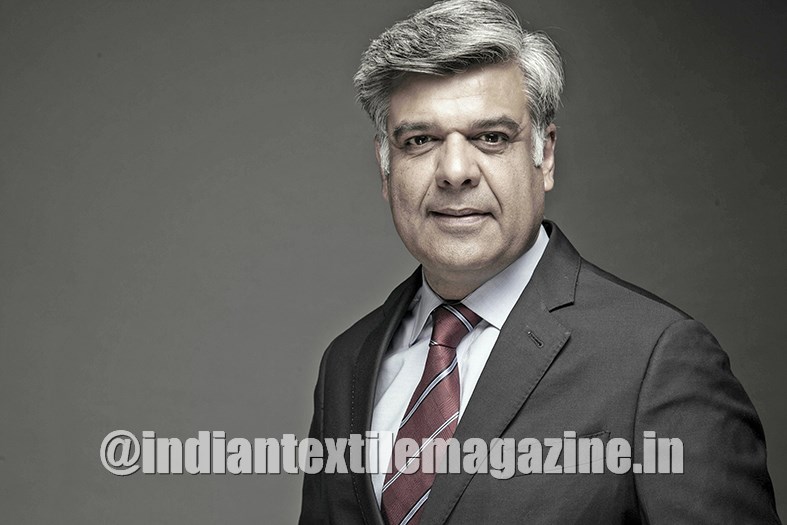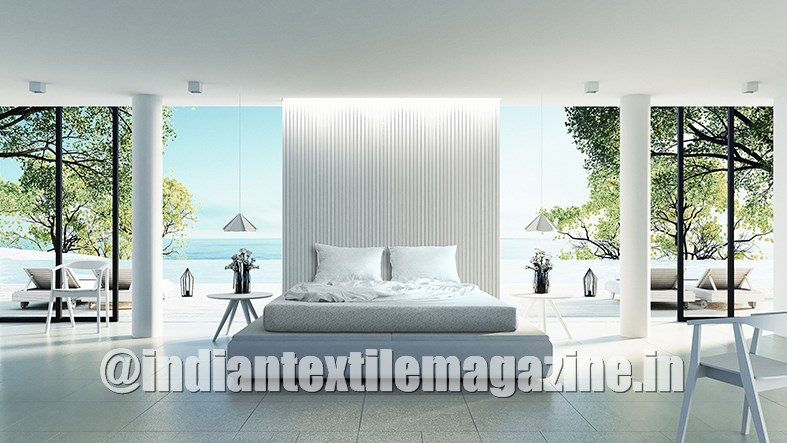The company is focusing on sustainability, traceability and innovation for future growth in home textiles
Each company has some inherent strength that paves the path for growth. In that respect, GHCL’s strengths revolve around its penchant for innovation and consistent product development with the aim of creating a clear differentiation from competition, strong passion for sustainability and the circular economy, thought leadership in creating intellectual property, and its ability to partner with multiple agencies to realise its four-pillar strategy. As Manu Kapur, President and CEO – Home Textiles, GHCL, says: “At GHCL, all that we do consistently revolves around our four-pillar strategy of sustainability, traceability, innovation and giving back to society.”

“This truly is our competitive edge and is something that customers look at us for. We are extremely passionate about sustainability and the circular economy and strive to work with fibres that have a low environmental impact, employing processes and solutions that are sustainable and focus on reduction, reuse and recycling,” he adds. Over the years, GHCL has been continuing to work on strengthening its marketing, product development and operating teams in the home textile segment. And the strategic focus of the company continues to revolve around its well-defined four pillars.
These areas are clearly becoming the company’s competitive advantage, and are likely to see a huge improvement in the proliferation of business across geographies, with better margins, in times to come. The company has now launched a few brands in the home textile segment including Rekoop, Cirkularity, Meditasi and Rekoop 2.0. The textile operation at GHCL is an integrated set-up commencing from spinning of yarn to weaving, dyeing, printing and processing till the production of finished items like sheets and duvets. These are primarily exported worldwide. It is one of India’s leading manufacturers of home textiles with an in-house spinning unit at Madurai, Tamil Nadu, and state-of-the-art home textile facilities at Vapi, Gujarat.
Ideas and innovation
GHCL has taken a very clear leadership position on innovation and sustainability as compared to global home furnishing manufacturers. Rekoop, GHCL’s sustainable bedding concept that is made by blending cotton with recycled polyester from post consumer PET bottles, was launched in March 2018. Rekoop is the only solution where the recycled polyester is forensically tagged through the ‘CertainT’ platform of Applied DNA Sciences in New York, thereby securing provenance and complete traceability across the supply chain. This is what makes it totally unique.
In fact, REKOOP is probably the first truly circular bedding concept, where having lived their lives, these sheets can be depolymerized, with the cotton becoming a bio-fuel and the recycled polyester being rendered raw material for remanufacture. Elaborates Kapur: “We wanted to do more than just provide paper trail certification and supply chain traceability of sustainable and special fibres to our customers. This is what spurred us to look at the fascinating arena of DNA tagging, the epitome of securing authenticity.”
“Our partnership with Applied DNA Sciences for the forensic tagging of recycled polyester paved the way for the uniqueness of Rekoop by establishing its provenance and traceability across the supply chain. Our traceability strategy has helped us in providing our customers the framework to stand behind the claims they make in a foolproof manner,” he adds. GHCL also launched a brand called Cirkularity, with eight different bedding collections that support the circular economy and focus on ‘reduce, reuse and recycle’.
In March 2019, the company launched a health and wellness bedding brand called Meditasi, which has nine ranges that include radiation control, temperature regulation, moisture management, athletic recovery and skin rejuvenation. More recently, in September 2019, Rekoop 2.0 was launched – an evolved and expanded expression of its earlier avatar – with recycled PET being blended with several different sustainable fibres with several different weaves and finishes along with performance integration and a wider spread across the price pyramid.
Sustainability factor
Elaborating about sustainability is a way of life at GHCL, Kapur says: “It is not viewed as a mere competitive advantage or as something that is either fashionable or essential to include in our scheme of things. We are truly passionate about sustainability and are constantly and conscientiously working towards reducing our impact on the environment and ensuring that our workers are adequately taken care of. We are consistently working with low-impact fibres – more sustainable cotton – BCI, organic or cotton leads, recycled polyester, cellulosic fibres like Lenzing AG’s TENCEL™ and REFIBRA™ and also fibres like modal, linen, hemp, cupro and kapok. Our intent is to move to the usage of over 50% ‘more sustainable cotton’ and 100% recycled polyester by 2021.”
GHCL has invested heavily in renewable energy, with 40% of its energy requirement for spinning coming from wind energy. The company’s investments in solar energy are ramping up quickly too. Over a quarter of GHCL’s total water in processing is reused as is 100% of the caustic used for mercerization. The company makes paver blocks of fly ash and limestone fines to mend and build roads within the factory, reuse waste metal for making trolleys, step ladders and separators. All conventional lighting has been replaced with LED lights and with indigenously made units that use the scientific principles of refraction to bring daylight into its shop floors and warehouses.
Manufacturing excellence
GHCL has integrated textile manufacturing facilities centering around spinning on one hand with 192,000 lakh spindles and 3,320 rotors and home textiles (weaving, processing, and cut and sew of bed textiles) on the other. The company’s state-of-the-art home textiles facility in Vapi, Gujarat comprises 190 air jet looms, 45 million metres of wide-width processing capacity, 12 million metres of weaving capacity and 30 million metres of cut and sew. “We are exploring avenues of capacity expansion that would support the extension of our product basket and you will see some interesting additions to our offering in 2020,” Kapur shares.
Future growth
The year 2019 has been good for GHCL. The company has been able to consciously correct its course, become more relevant, and solidify its positioning. GHCL has continued to be a meaningful partner to a host of retailers, importers and brands overseas and has added some prominent customers in its fold. The company has also expanded its US’ operations and hired an executive vice president in New York to expand business in the region. In his concluding remarks, Kapur states: “In my opinion, sustainability will be the key factor to drive the future growth of home textiles’ globally.”
“There is an increasing awareness of the damage that the textile industry inflicts on the planet, being the second most polluting industry globally and being responsible for the utilisation of huge levels of non-renewable resources. At the same time there is an increased demand for products that are made using sustainable raw materials, production processes and supply chains. In that respect, GHCL is well set to embrace this key factor wholeheartedly given the passion that we have for preserving the planet and its people,” he adds.
“At GHCL, all that we do consistently revolves around our four-pillar strategy of sustainability, traceability, innovation and giving back to society – Manu Kapur, President and CEO, Home Textiles, GHCL
“We are exploring avenues of capacity expansion that would support the extension of our product basket and you will see some interesting additions to our offering in 2020 – Manu Kapur

